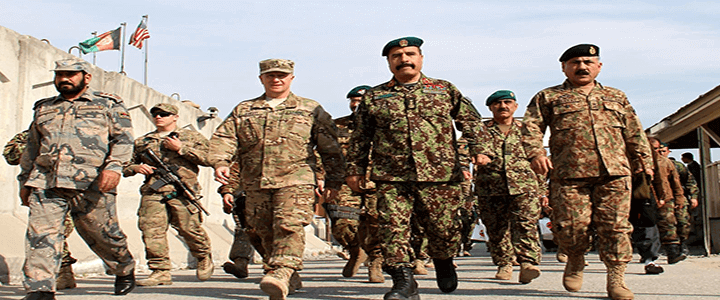Good ideas sometimes take a long time to come to fruition in the Army, if they ever do.
Douglas MacGregor is a retired Army cavalry colonel who had an idea about how the Army’s fighting formations should be organized. As a veteran of the Battle of 73 Easting in Operations Desert Storm (the current National Security Adviser, Lt. Gen. H.R. McMaster was a cavalry troop commander in the same unit), MacGregor believed that the armored cavalry regiment — a self-contained, self-supporting combined arms unit capable of independent action — was the model all Army combat units should follow. I can’t find any trace of it now, but I swear I remember reading his ideas in an Army Times commentary sometime in the early 1990s.
He more fully explored his early ideas in his 1997 book, Breaking the Phalanx. Some in the Army leadership loved his ideas, but many hated them, and resisted. Eventually, however, MacGregor’s “brigadist” model overcame the Army’s institutional inertia and became the basis for the Army’s transformation of last decade. The “modular” brigade combat team formation is his baby.
The newest formation goes to war
Now, with the arrival in Kabul, Afghanistan of the leadership for the Army’s newest unit we see the ultimate triumph of the once-shunned ideas of another veteran of the Army’s Armor Corps. Over the coming weeks, the rest of the 800-soldier the 1st Security Forces Assistance Brigade will arrive in-theater to begin their year-long mission to build the capacity of the Afghan National Army.
Undoubtedly, retired Lt. Col. John Nagl is sitting at home in Haverford, Penn., where he is now headmaster of the Haverford School, and smiling. Because the SFABs are Nagl’s long overdue baby.
I worked with Nagl when he was promoting the Army’s Counterinsurgency Field Manual back in 2007. Like MacGregor, he’s a West Point grad and a Desert Storm vet. He’s also a Rhodes Scholar whose doctoral dissertation on counterinsurgency became the acclaimed book Eating Soup with a Knife.
Along with urging the Army to focus on COIN, Nagl was an advocate for creating dedicated units that could deploy for the purpose of training foreign forces. This mission, Nagl argued, was a role that was not only no longer the exclusive domain of special operations forces, it was too important to be left to small units of soldiers pulled from their units and given what many considered to be a dead-end assignment.
Knocking heads with the brass
In June 2007, while still battalion commander of the unit responsible for preparing the ad hoc “Military Transition Teams” for their advisor roles in Iraq, Nagl published “Institutionalizing Adaptation: It’s time of a Permanent Army Adviser Corps,” through the Center for New American Security think tank.
The Army leadership disagreed, vigorously. Literally overnight, it became the the Army’s policy that the advise and assist mission belonged to the brigade combat team. The Army’s vice chief of staff, Gen. Richard Cody, went so far as to unceremoniously kill a TRADOC study on the idea. (They found out from me, a lowly public affairs officer, when I called to tell them).
But Cody, like Nagl, is long-retired. The Army’s current chief of staff, Gen. Mark Milley, is a “long tabber” — a Special Forces officer — who understands the value of the advise and assist mission, and who also knows the mission is ultimately a drain on a BCT’s readiness.
The Army has announced that it will create additional SFABs so the mission can continue after the current deployment ends. This is entirely appropriate, since one year, even one year from dedicated soldiers who have trained hard for the mission, isn’t going to accomplish what the United States and our allies haven’t been able to accomplish since former Afghan President Hamid Karzai began phasing-out local militias in favor of a national army in December 2002.
But without building the capacity for self-preservation, the wider mission of building the Afghan capacity for self-governance and self-sustainment would be fruitless.
The Army, and likely Afghanistan, owes John Nagl a debt of gratitude.


